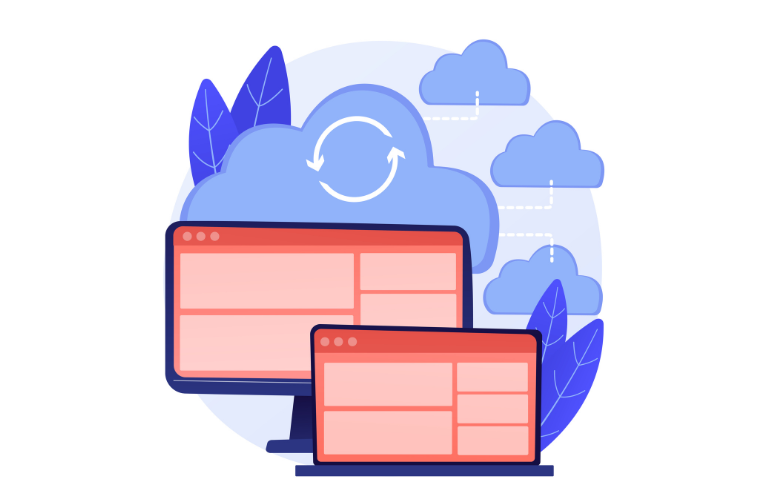Laravel Herd is revolutionizing how developers collaborate on PHP and Laravel projects. For teams juggling multiple developers, inconsistent environments, and time-consuming setups, Herd’s herd.yml file offers a game-changing solution. By centralizing project configurations, it ensures everyone works in sync, saving time and reducing errors.
This article dives into how Laravel Herd, through its herd.yml feature, streamlines team workflows, enhances consistency, and tackles common pain points like slow performance or misaligned setups. Whether you’re a solo developer or part of a large team, you’ll find actionable tips to optimize your development process.
Table of Contents
Why Teams Struggle with Project Configuration
Development teams often face challenges when aligning their local environments. One developer might use PHP 8.2, while another runs 8.3, leading to “works on my machine” issues. Manual setups for services like MySQL or Redis can take hours, delaying project kickoffs. These inconsistencies slow progress and frustrate teams aiming for seamless collaboration.
Laravel Herd addresses these pain points by offering a lightweight, native development environment for Windows and macOS. Its herd.yml file acts as a single source of truth, ensuring every team member uses identical settings—PHP versions, services, and domains—without manual tweaks.
What is herd.yml and Why It Matters
The herd.yml file is a configuration blueprint for Laravel Herd projects. It lets teams define critical settings, such as PHP versions, database services, and SSL certificates, in one place. By sharing this file in your project repository, everyone clones the same setup, eliminating environment mismatches.
This approach saves time and boosts productivity. Instead of troubleshooting version conflicts or service misconfigurations, developers focus on coding. For teams using Laravel Herd, herd.yml is the key to consistent, frustration-free collaboration.
Key Benefits of Using herd.yml for Teams
Implementing herd.yml transforms how teams work together. Here’s why it’s a must-have:
- Consistency Across Environments: Every developer uses the same PHP version, services, and settings, reducing bugs caused by discrepancies.
- Faster Onboarding: New team members set up projects in minutes by running a single command, not hours configuring tools.
- Time-Saving Automation: Laravel Herd applies herd.yml settings automatically, skipping manual service installations.
- Scalable Collaboration: From small startups to enterprise teams, herd.yml ensures smooth workflows as projects grow.
- Error Reduction: Centralized configurations minimize human errors during setup, keeping projects on track.
By leveraging Laravel Herd’s herd.yml, teams cut setup time by up to 50%, as seen in real-world cases where developers switched from Docker-based environments.
How to Create and Use herd.yml: A Step-by-Step Guide
Setting up herd.yml is straightforward, even for beginners. Follow these steps to streamline your team’s workflow with Laravel Herd.
Step 1: Initialize herd.yml
Navigate to your project directory in the terminal and run:
herd initThis command launches a wizard guiding you through setup. It prompts for:
- Project name
- PHP version (e.g., 8.3)
- Aliases for multiple domains
- SSL settings
- Services like MySQL or Redis (Herd Pro users)
For example, running herd init in a project called “team-app” might look like this:
~ team-app (main)
› herd init
┌ What is the name of your project? ───────────────────────────┐
│ team-app │
└──────────────────────────────────────────────────────────────┘Once complete, a herd.yml file appears in your project root.
Step 2: Customize Your herd.yml File
The generated herd.yml file might look like this:
name: team-app
php: '8.3'
secured: true
aliases:
- team-app-local
services:
mysql:
version: 8.0.36
port: '${DB_PORT}'
redis:
version: 7.0.0
port: '${REDIS_PORT}'Edit this file to match your project’s needs. For instance, set a fixed port (e.g., 3306 for MySQL) if your team prefers static configurations over .env placeholders. Always share the updated file in your repository to keep everyone aligned.
Step 3: Apply Configurations
When a team member clones the project, they run:
herd initLaravel Herd checks for herd.yml and applies its settings. If an .env file is missing, it offers to copy .env.example. The output might show:
~ team-app (main)
› herd init
INFO Setting up your project…
INFO PHP 8.3 is installed.
INFO Site is secured.
INFO MySQL is running on port 3306
INFO Redis is running on port 6379
DONE Your application is ready to go!This command ensures the developer’s environment matches the team’s setup instantly.
Step 4: Share and Collaborate
Commit herd.yml to your Git repository (e.g., GitHub). Team members pull the latest version, run herd init, and start coding without worrying about mismatched PHP versions or services. For updates, use:
herd init --freshThis overwrites the existing herd.yml with new settings, ensuring everyone stays in sync.
Real-World Use Case: Streamlining a Team Project
Imagine a five-developer team building a Laravel e-commerce app. Previously, they used Docker, spending hours aligning PHP 8.2, MySQL, and Redis across machines. Conflicts arose when one developer upgraded to PHP 8.3 unknowingly, breaking the app locally.
After switching to Laravel Herd, they created a herd.yml file specifying PHP 8.2, MySQL 8.0, and Redis 7.0. Each developer ran herd init after cloning the repo, setting up identical environments in under five minutes. When a new developer joined, they were coding within 10 minutes, not days. The team reported a 40% reduction in setup-related issues, letting them focus on features like payment integrations.
Time-Saving Shortcuts with Laravel Herd
Laravel Herd offers commands to boost efficiency beyond herd.yml. Here are shortcuts teams love:
- Switch PHP Versions: Change versions instantly with herd use php@8.2.
- Secure Domains: Enable HTTPS with herd secure for local testing.
- Link Projects: Map directories to .test domains using herd link.
- Expose Sites: Share local apps online via herd expose for quick feedback.
- Check Versions: Verify setups with php –version, composer –version, or node –version.
These commands, combined with herd.yml, cut manual tasks, letting developers prioritize coding over configuration.
Tackling Common Pain Points
Laravel Herd doesn’t just simplify collaboration—it solves real issues teams face.
Slow Performance
If Herd feels sluggish, Windows Defender might be scanning its folders. Add an exclusion for %USERPROFILE%\.config\herd to boost speed. Also, close unused apps or increase memory allocation in Herd’s settings for smoother performance.
PHP Version Conflicts
Mismatched PHP versions disrupt projects. With herd.yml, specify one version (e.g., php: ‘8.3’) to enforce consistency. Switch versions easily via herd use php@8.3 if needed for testing.
Database Connection Errors
If MySQL or Redis fails to connect, verify .env settings match herd.yml’s ports. For example, ensure DB_PORT=3306 aligns with mysql: port: ‘3306’. Restart services with herd restart to apply changes.
Best Practices for herd.yml Collaboration
To maximize Laravel Herd’s benefits, follow these tips:
- Version Control herd.yml: Always commit it to your repo for team access.
- Use Aliases Wisely: Define clear aliases (e.g., team-app-local) to avoid domain conflicts.
- Document Changes: Add comments in herd.yml for complex setups, like custom ports.
- Test Locally First: Run herd init locally before pushing updates to catch errors.
- Leverage Herd Pro: For advanced teams, Herd Pro automates service installations like PostgreSQL or Meilisearch.
These practices ensure herd.yml remains a reliable tool for collaboration.
Laravel Herd vs. Other Tools
Compared to Docker or Homestead, Laravel Herd shines for simplicity. Docker’s containerization is powerful but complex, requiring significant setup. Homestead, while robust, feels heavy for smaller projects. Herd’s lightweight design and herd.yml focus make it ideal for teams prioritizing speed and ease.
For macOS users, Valet is fast but lacks Herd’s full-stack services like MySQL out of the box. Herd balances simplicity and functionality, perfect for collaborative Laravel projects.
Conclusion: Elevate Your Team’s Workflow
Laravel Herd, with its herd.yml file, transforms team collaboration by ensuring consistent, hassle-free project setups. By automating configurations and reducing errors, it lets developers focus on building great applications. Whether you’re tackling PHP version mismatches or onboarding new team members, Herd streamlines the process, saving time and boosting productivity.
Ready to simplify your team’s workflow? Download Laravel Herd from the official website and run herd init to create your first herd.yml. Share it with your team, and experience seamless collaboration like never before.
FAQs
1. What is Laravel Herd and how does it help teams?
Laravel Herd is a native development environment for PHP and Laravel projects on Windows and macOS. It simplifies team collaboration by providing a consistent setup through the herd.yml file, ensuring all developers use the same PHP version, services, and configurations, reducing errors and setup time.
2. How do I create a herd.yml file for my project?
Navigate to your project directory in the terminal and run herd init. This launches a wizard to configure project name, PHP version, services like MySQL, and SSL settings. The herd.yml file is then generated in your project root for team sharing.
3. Can Laravel Herd work with non-Laravel projects?
Yes, while optimized for Laravel, Laravel Herd supports other PHP frameworks like Symfony, Slim, and even WordPress. You can customize the herd.yml file or create custom drivers to suit non-Laravel projects.
4. Why is my Laravel Herd running slowly?
Slow performance may stem from Windows Defender scanning Herd’s folders. Add an exclusion for %USERPROFILE%\.config\herd in Defender settings. Also, ensure no conflicting services use ports like 80 or 3306, and close unused apps to free up resources.
5. How does herd.yml ensure team consistency?
The herd.yml file defines project settings like PHP version, database ports, and aliases. When shared in a repository, team members run herd init to apply these settings, ensuring identical environments and eliminating “works on my machine” issues.
6. Is Laravel Herd better than Docker for team projects?
Laravel Herd is simpler and faster to set up than Docker, making it ideal for teams prioritizing ease and speed. While Docker offers robust containerization, Herd’s lightweight design and herd.yml file streamline collaboration for Laravel projects.
7. How do I update herd.yml for my team?
Edit the herd.yml file to adjust settings like PHP version or services. Commit the changes to your repository, and have team members run herd init or herd init –fresh to apply updates, keeping everyone’s environment in sync.




